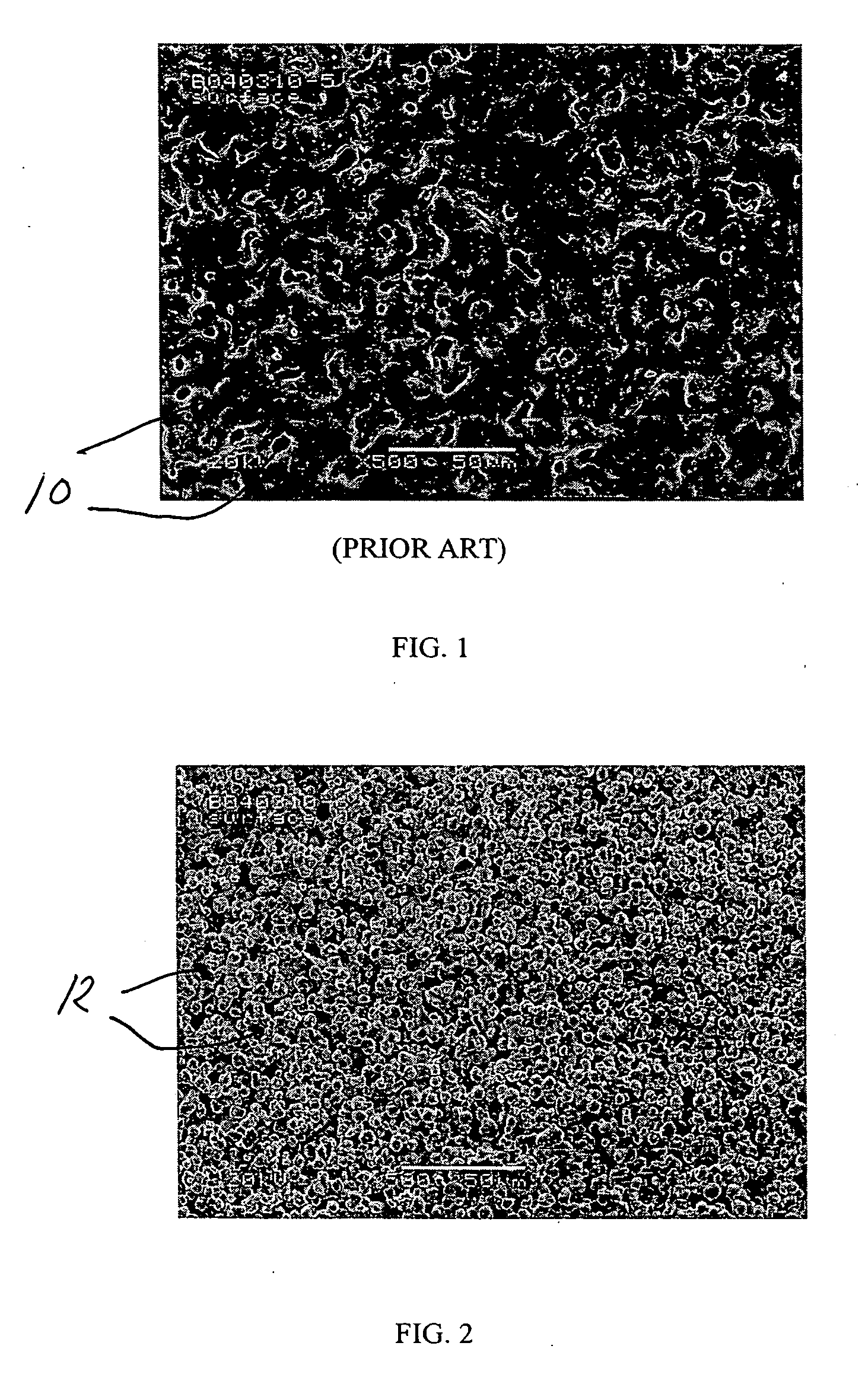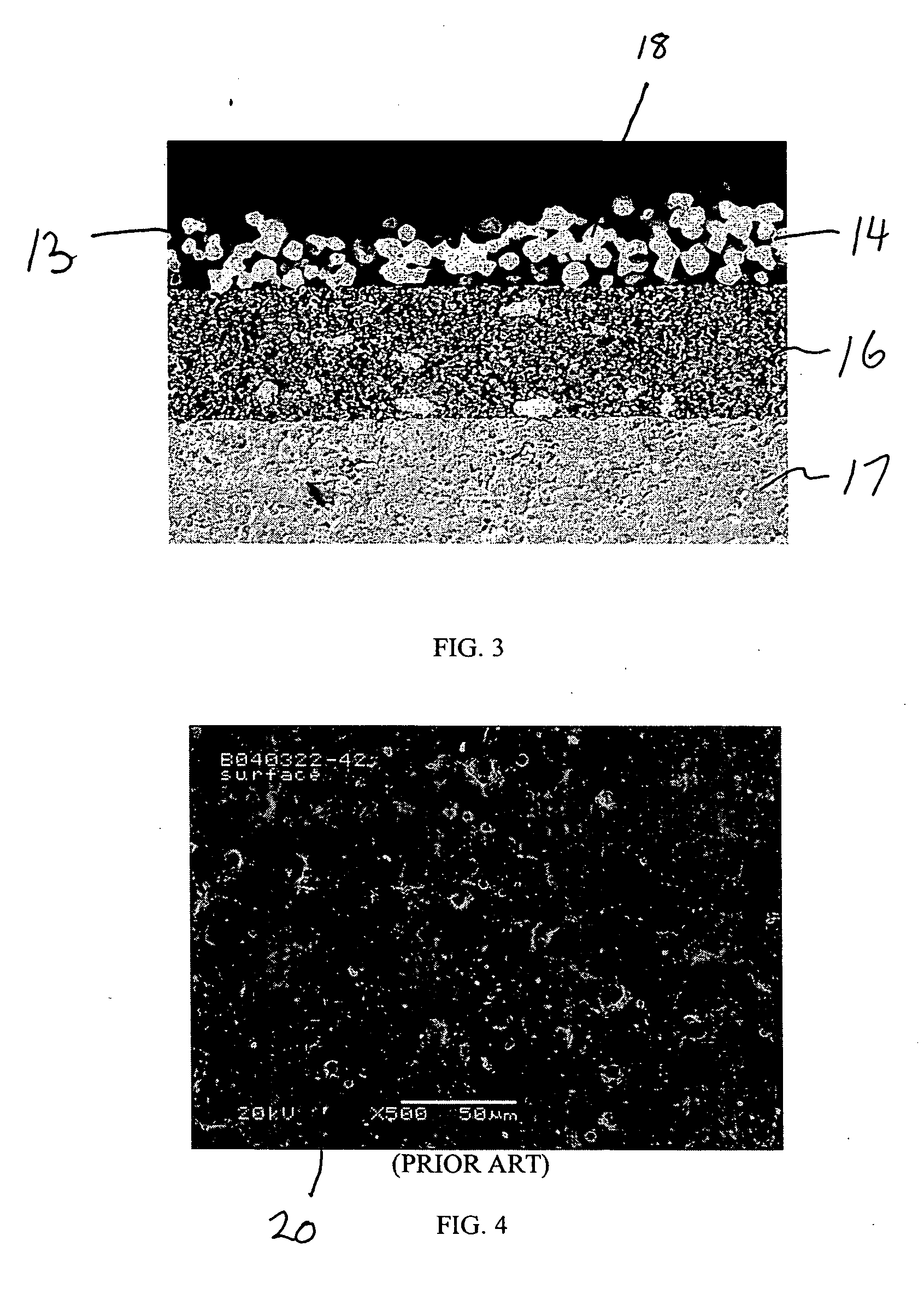Manufacturing method and current collector
a current collector and manufacturing method technology, applied in the field of current collector manufacturing, can solve the problems of sintering and densification of current collectors, and achieve the effects of increasing mechanical integrity and adhesion, reducing manufacturing costs, and reducing labor intensity
- Summary
- Abstract
- Description
- Claims
- Application Information
AI Technical Summary
Benefits of technology
Problems solved by technology
Method used
Image
Examples
Embodiment Construction
[0023] In accordance with a method of the present invention, a porous current collector is formed from a powder containing a metal or metal alloy having surface deposits of a metallic oxide. Such a powder can be produced by methods well known in the art, for example by wash-coating or mechanical alloying. For exemplary purposes, a silver powder, designated as FERRO S11000-02 powder, was obtained from Ferro Corporation, Electronic Material Systems, 3900 South Clinton Avenue, South Plainfield, N.J. 07080 USA. The size of particles contained in such powder is between about 3 and about 10 microns in diameter and the particles have a low specific surface are of about 0.2 m2 / gram. These features are preferred in that it is believed that they limit the driving force for sintering and densification. Zirconia surface deposits were formed on such powder such that the zirconia accounted for about 0.25 percent of the weight of the coated particle.
[0024] As may be appreciated, other electrical ...
PUM
| Property | Measurement | Unit |
|---|---|---|
| particle size | aaaaa | aaaaa |
| particle size | aaaaa | aaaaa |
| pore size | aaaaa | aaaaa |
Abstract
Description
Claims
Application Information
 Login to View More
Login to View More - R&D
- Intellectual Property
- Life Sciences
- Materials
- Tech Scout
- Unparalleled Data Quality
- Higher Quality Content
- 60% Fewer Hallucinations
Browse by: Latest US Patents, China's latest patents, Technical Efficacy Thesaurus, Application Domain, Technology Topic, Popular Technical Reports.
© 2025 PatSnap. All rights reserved.Legal|Privacy policy|Modern Slavery Act Transparency Statement|Sitemap|About US| Contact US: help@patsnap.com



